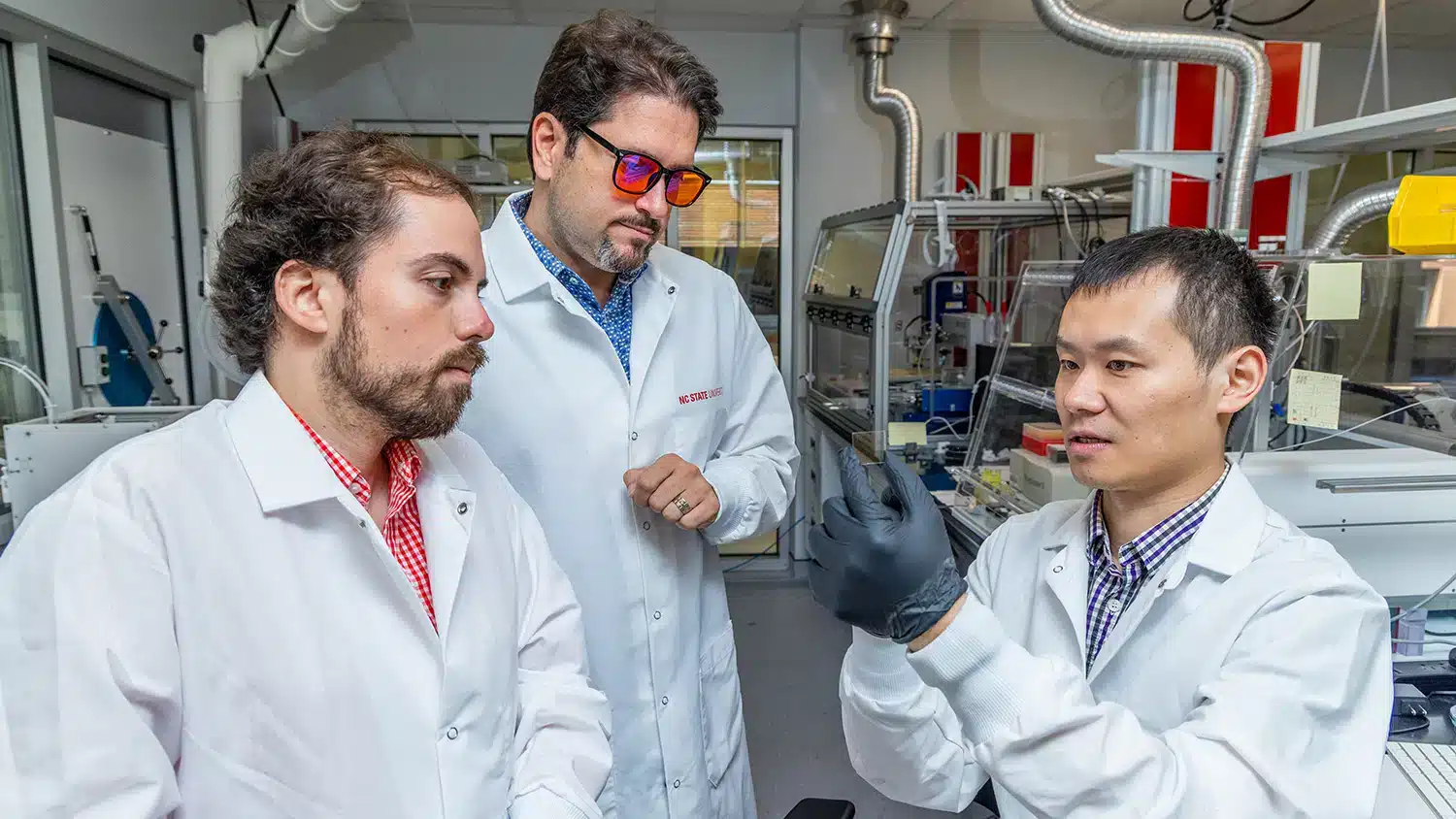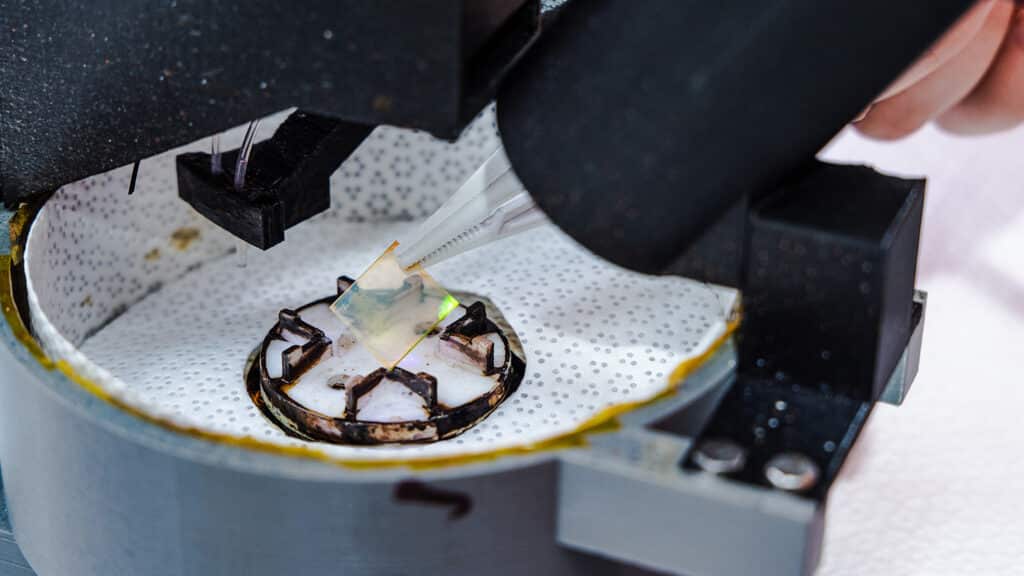
Solar energy is key to combating climate change, but harnessing it is difficult. In current solar panels, only 20% of available energy is typically transformed into electricity. An NC State professor is leading the development of more effective solar panels cells so that this renewable energy source can replace dwindling fossil fuels. At the same time, this work is establishing more accessible ways to do research in science, technology, engineering and mathematic fields.
In the 2010s, Aram Amassian, a professor in the Department of Materials Science and Engineering, pioneered new processes through which to coat materials using inks. These in situ experiments allow researchers to collect data about the function of the ink during its fabrication as opposed to after it has formed. This way, researchers can more precisely identify when and how to intervene to control materials’ various properties. The ink can be essentially edited closer to real time. Now, Amassian’s lab conducts such in situ experiments using artificial intelligence and robotics to develop efficient solar panel materials.
“We need to move quickly and develop technologies faster than climate change is occurring,” Amassian said. “To do this, we need to transform the way in which we discover new materials, create new solutions and deploy new technologies.”
Interdisciplinarity is vital to Amassian’s work. His lab integrates electrical and computer engineering into materials science to develop artificially intelligent robots that help conduct solar energy research. These robots automatically mix, apply and assess solutions that could better transform solar energy into electricity, accelerating the development of innovative materials.
“These problems we’re trying to solve are really complicated,” Amassian said. “At some point, they go beyond the capabilities of one person or one discipline and require data science.”
Tonghui “Tony” Wang, a Ph.D. candidate in the Department of Materials Science and Engineering, and Nathan Woodward, a Ph.D. student in the Department of Electrical and Computer Engineering, are the driving force of this robotics initiative. Wang, who joined Amassian’s lab in 2018, developed the first iteration of the robotic tools that generate large datasets of solar energy material structure and properties. Woodward, who joined the lab in 2019, has advanced the lab’s capabilities by building robots that make decisions and perform certain tasks autonomously.
Woodward’s background in electrical engineering isn’t the only different perspective he brings to the materials science lab. As a person with muscular dystrophy, Woodward has had to tackle the challenges of living in an inaccessible world.
“People with disabilities are natural engineers because we have to solve problems every day,” he said.

In automating their research process, Amassian, Wang, Woodward and the rest of the lab are establishing methods that are less labor-intensive than current practices. Machines complete repetitive tasks the same way each time and log all of the data. That means scientists can spend less time mixing, pipetting, coating and testing and spend more time and energy discovering, problem-solving and innovating.
“We’re excited about developing companions that help students and researchers become much more productive in the lab,” Amassian said. “Today, we ask our Ph.D. students and candidates to do a lot of basic handwork, mixing and cleaning, from morning to evening. In the age of data, we increasingly require students to log everything they do into a database, which can be a significant time sink. With automation in the lab, we can take a highly educated, well-trained Ph.D. scientist and use more of their intellect to solve a complex problem instead of these tasks.”
The team’s focus on interdisciplinarity is helping its members grow as scientists and engineers. Woodward has studied the intricacies of material processing while developing robotic platforms. Wang has learned more about software and data science in addition to building on his foundation in materials science. Such collaboration can change the landscape of materials research.
“The way we think about these problems classically in materials science is to use trial and error,” Wang said. “But since moving toward automation and digitization, we’re starting to use big-picture data science approaches and planning in our research. We can access a larger parameter space easily, and data is available in an instant. Using robotics and artificial intelligence makes it possible to solve more complex problems and helps us move toward smarter lives.”

The lab could have a bigger impact beyond its contributions to materials science and solar energy. Woodward has shown Amassian firsthand the challenges people with physical disabilities face, which extend into research labs. The pair have worked to make Amassian’s lab more accessible, and they hope their efforts using robots in the lab will pave the way for more accessible research opportunities across the board.
“There’s a very small number of people with disabilities in STEM to begin with, and that number is even smaller going from undergraduate programs to Ph.D. programs,” Woodward said. “This has the potential for people who have greater physical limitations than I have to pursue fulfilling careers in science.”